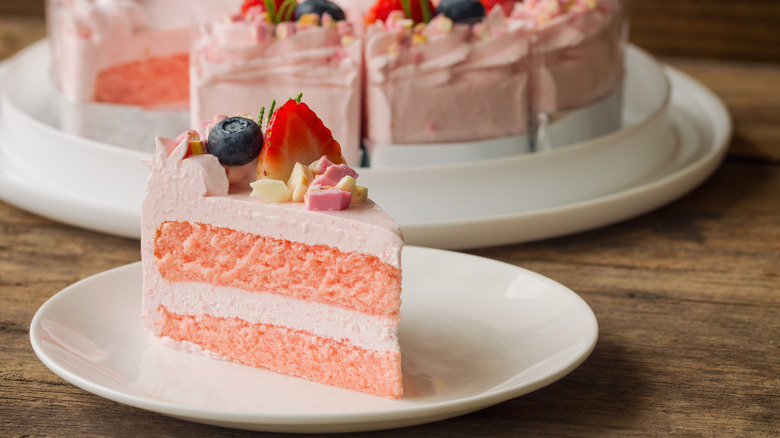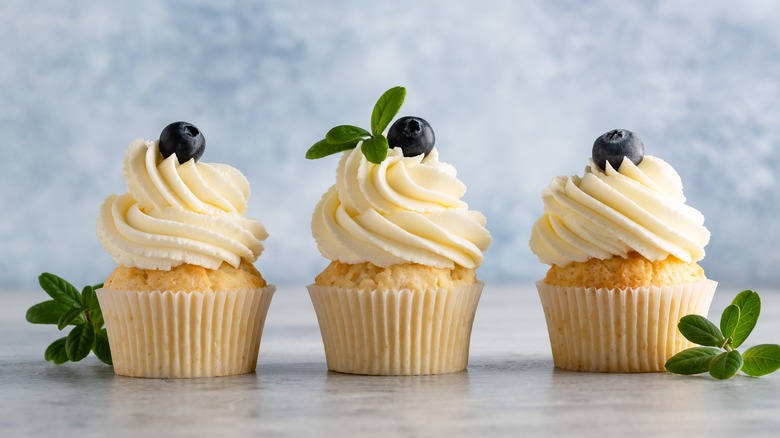Choose Cake Flour Over All-Purpose For More Tender Cakes
If you love to bake, you're probably familiar with the qualities of most of the ingredients commonly used and how they affect the outcome of your desserts: How cold butter helps produce the flakiest pie crust, for example, or how moist brown sugar creates soft and chewy cookies as opposed to the crunchy ones produced by white sugar.
But even the most experienced home baker might get tripped up by all the varieties of flour out there. Without even getting into alternative flours such as amaranth, quinoa and buckwheat, wheat flours alone come in so many forms: All-purpose, whole wheat, semolina, pastry, and durum, to name just a few.
Which flour, then, should you reach for when baking? If you're crafting a layer cake, some cupcakes, or even delicate cookies such as shortbread, you may not know whether to choose all-purpose flour or cake flour. But for these recipes, it's a safe bet to select the latter.
Cake flour is perfectly suited for delicate desserts
If you're setting out to bake a tender, fluffy cake, it's almost always a good idea to pick up some cake flour at the supermarket, even if you already have some all-purpose at home. What's the difference? Cake flour contains a substantially lower amount of protein than all-purpose flour: Ten percent as opposed to 11.7%. Less protein means less potential to form gluten, which lends baked goods a bouncy, chewy texture, instead of the soft, fluffy one you'd want in a cake.
Angel food cakes, layer cakes, and cupcakes are all excellent candidates for cake flour, as are "meltaway" type cookies such as shortbread, pecan sandies, and thumbprints. Just be sure to look for a recipe that specifically calls for cake flour; While all-purpose flour can be subbed 1:1 in any recipe calling for cake flour, the opposite is not true, and you might end up with a heavy, sunken cake or cookies that simply fall apart. And if you're craving a light cake with a fine, even crumb — but don't want to go to the grocery store — remember that you can make your own cake flour at home: Three quarters of a cup and 2 tablespoons of all-purpose flour whisked with 2 tablespoons cornstarch does the trick nicely.

